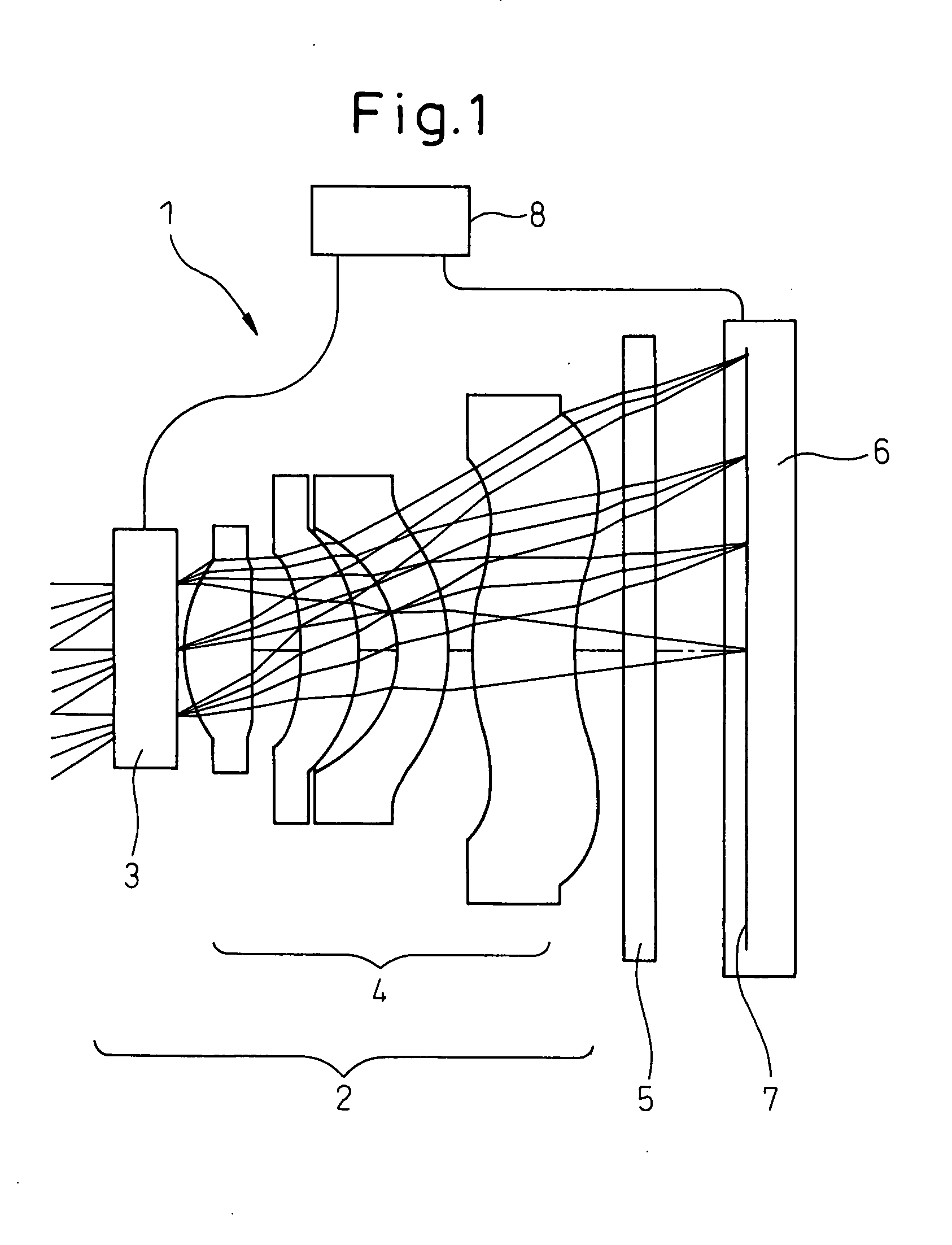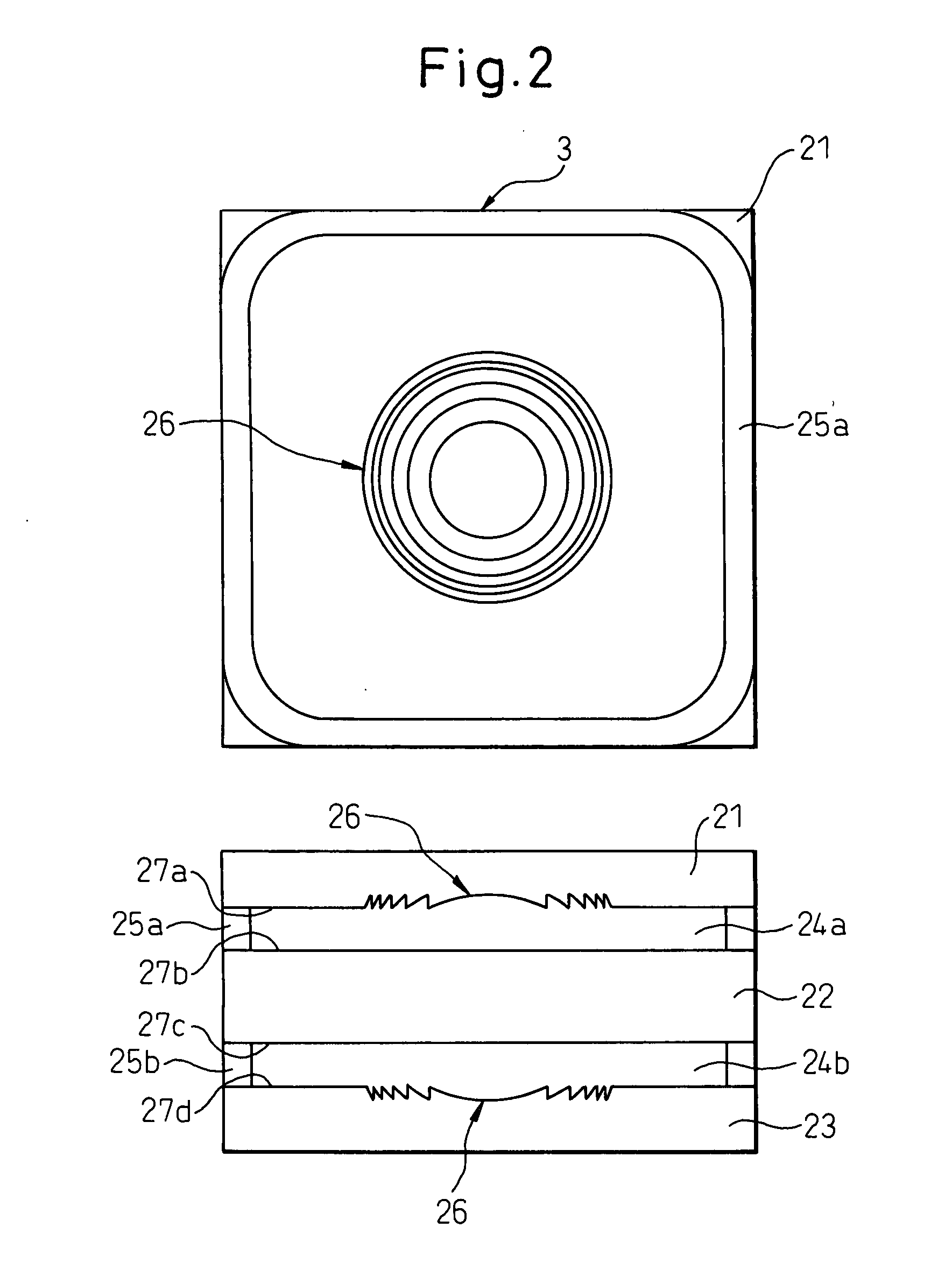Liquid crystal lens and imaging lens device
a liquid crystal lens and imaging lens technology, applied in non-linear optics, instruments, optics, etc., can solve the problems of reducing the response difficult to produce a smooth distribution of the refractive index in the liquid crystal layer, and degradation of the lens performance of the liquid crystal lens
- Summary
- Abstract
- Description
- Claims
- Application Information
AI Technical Summary
Benefits of technology
Problems solved by technology
Method used
Image
Examples
first embodiment
[0085] As described above, in accordance with the present invention, the step difference between zones of the Fresnel lens surface 26 provided on the boundary of the liquid crystal layers 24a, 24b and the transparent substrates 21, 23 of the liquid crystal lens 3 of variable lens power used in focusing, is set such that, at generally minimum lens power (that is, generally minimum refractive index of the liquid crystal layer 24a, 24b for extraordinary ray) of the liquid crystal lens 3, the difference of the optical path length at the step is an integer multiple of the wavelength of incident light, especially an integer multiple of any of the wavelength for which the imaging element has sensitivity. With such a construction, it is also possible to impart the function of a diffractive optical element to the liquid crystal lens 3, while the interference of luminous flux from zones of the Fresnel lens surface 26 can be prevented even when the lens power of the liquid crystal lens 3 is ch...
second embodiment
[0100] As described above, in accordance with the present invention, the step difference between zones of the Fresnel lens surface 26 provided on the boundary of the liquid crystal layers 24a, 24b and the transparent substrates 21, 23 of the liquid crystal lens 13 of variable lens power used in focusing, is set such that the optical path difference produced at the step for ordinary ray is an integer multiple of design wavelength, preferably one design wavelength, of the incident light. For an extraordinary ray, the refractive index of the liquid crystal layers 24a, 24b is changed within such range that optical path difference produced at the step is greater than the design wavelength of the incident light. With such construction, the liquid crystal lens 13 can also function as a diffractive optical element over the entire range of variable lens power. As a result, the imaging lens device 11 can have a wide focusing range and exhibit good image-forming performance over the entire foc...
PUM
| Property | Measurement | Unit |
|---|---|---|
| refractive index | aaaaa | aaaaa |
| refractive index | aaaaa | aaaaa |
| wavelength | aaaaa | aaaaa |
Abstract
Description
Claims
Application Information
 Login to View More
Login to View More - R&D
- Intellectual Property
- Life Sciences
- Materials
- Tech Scout
- Unparalleled Data Quality
- Higher Quality Content
- 60% Fewer Hallucinations
Browse by: Latest US Patents, China's latest patents, Technical Efficacy Thesaurus, Application Domain, Technology Topic, Popular Technical Reports.
© 2025 PatSnap. All rights reserved.Legal|Privacy policy|Modern Slavery Act Transparency Statement|Sitemap|About US| Contact US: help@patsnap.com



